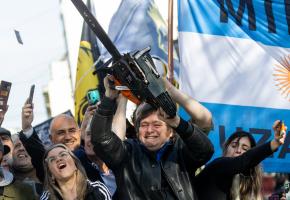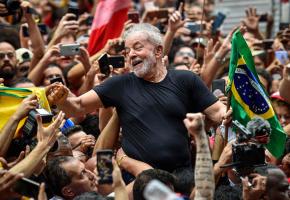1. Mercedes Sosa - Argentina
"The Voice of America,” as she would later be known, Sosa became one of the most popular and influential Argentinian singers ever. Her outspokenness against the Argentine dictatorship of 1976-1983 and the ‘disappearance’ of 30,000 people, forced her into exile in 1979. The unique depth and clarity of her voice, as well as her commitment, earned her admirers around the world. She later collaborated with the likes of Shakira, Joan Baez, Andrea Bocelli and others.
2. Victor Jara - Chile
A multi-talented artist, Jara was considered the father of Chilean Nueva Canción. He also became one of the most famous victims of Pinochet’s coup. After September 11 1973, Victor was rounded up with thousands of others in the national football stadium, tortured and shot dead. Victor Jara and his song Comandante Che Guevara have been important symbols for the Latin American left ever since.
3. Silvio Rodriguez - Cuba
Silvio is one of the most successful Cuban singer-songwriters of the 20th Century. Alongside Pablo Milanes and others, he invented Nueva Trova Cubana. His poetic lyrics and his lifetime commitment to the Revolution have made him one of Cuba’s main cultural exports. He sells out football stadiums in every country in Latin America.
4. Ali Primera - Venezuela
This "de facto” singer of The Venezuelan Communist party was at the same time hugely popular amongst Venezuelans in the 1980s. Known as El Cantor del Pueblo, he wrote and sung against the oppression and poverty of the lower classes. He died at the young age of 43, but his music would later become national heritage during Hugo Chavez government, who always professed his deep admiration for the singer.
5. Chico Buarque - Brazil
Part of the generation of great Brazilian musicians that includes Caetano Veloso and Gilberto Gil (who were also exiled) Chico was probably the most socially committed of them all. Despite being censored during Brazil’s military government, Chico kept releasing music under different aliases. After 50 albums and a handful of published books, he still performs to this date.
6. Ruben Blades - Panama
The first artist to mix Salsa, a genre known more for escapism than political content, and social commentary Blades took political lyrics to a whole new audience. From Pablo Pueblo about the plight of the working man to Buscando America (Looking for America), a call to Latin solidarity, Blades’ music and lyrics moved millions, both emotionally AND on the dance floor. His album Siembra was the best selling Latino album for more than two decades.
7. Violeta Parra - Chile
A massively influential artist, who inspired Victor Jara and pioneered Nueva cancion Chilena. Her song Gracias a la Vida is one of the most covered Latin American songs in history. It was popularized throughout Latin America by Mercedes Sosa and Chico Buarque, copied by almost everyone including Juan Luis Guerra and Juanes and even international artists such as Joan Baez and Michael Buble.
8. Pablo Milanes - Cuba
Another successful Cuban artist of Nueva Trova, and supporter of the Revolution, Pablo’s music is more traditional than Silvio Rodriguez, but no less popular. His song Yolanda, is one of the most played songs in the Spanish speaking world.
9. Leon Gieco and Victor Heredia- Argentina
A folk-rocker, Leon was often seen on stage with Mercedes Sosa and Victor Heredia singing against social injustice, police brutality and freedom of expression, during Argentina’s dictatorship and beyond. More recently he embarked on a tour showcasing disabled artists across Argentina. His song Solo le Pido a Dios, is almost an Argentine national anthem.
10. Carlos Puebla - Cuba
A member of the Old Trova, he was as supporter of Fidel Castro since the start of the revolution, which led people to call him ‘El Cantante de la Revolción’. His song Hasta Siempre Comandante is still sung around the world and has been covered by many people. He would become a big influence on the Nueva Trova that would spring later.

















